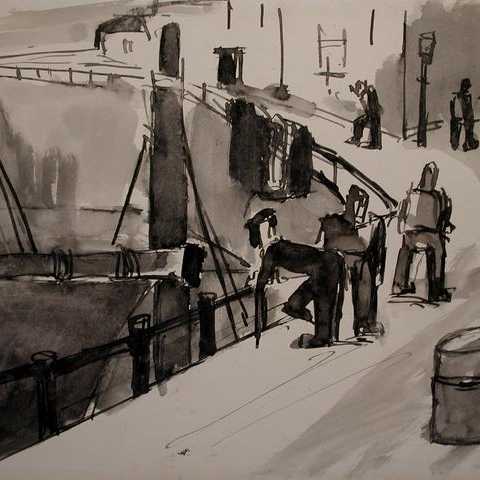Date From
Date To
Website
Admission fees
Free
Gallery
Connaught Brown
Address
2 Albemarle Street
London
W1S 4HD
United Kingdom

Josef Herman, Peter Potworowski and Jacob Bornfriend were all part of a significant group of emigré artists who fled Nazi-occupied Europe and settled in the UK during World War Two. This exhibition will explore a selection of their works on paper, including drawings, paintings and collages, in which they celebrated the British people and landscape.
Herman, who had escaped Poland, took as his subject the working class figures he encountered in Wales and Suffolk. A Jewish artist who lost his entire family in the Holocaust, he was determined "not to paint or draw images of suffering". His main concern, instead, was to capture the "dignity of the ordinary and the everyday" which he achieved through iconic and monumental images of miners, field workers and fishermen.
Potworowski, like Herman, took as his starting point scenes of everyday life in the UK. However, he abstracted still lifes, landscapes and figures in a profusion of light and colour, evoking a strong feeling of place. In his use of bold colours the influence of his time in France can be felt, when he was impressed by the work of Vuillard and Matisse; while his sense of structure and rhythm reveals the lessons he learnt during his time in the studio of Léger. In his later work, the shapes become increasingly abstracted following his trips to Cornwall, where he made connections with the St. Ives group and a close friendship with Kenneth Armitage.
Early in his career Bornfriend based his work on the folk-art of his homeland, Czechoslovakia and the European figurative tradition. However, after fleeing to England in 1939 he focused on abstracting landscapes and still lifes, revealing the two-way dialogue between himself and the British Abstractionists, including Patrick Heron and Peter Lanyon. By using rhythmic patterns, he conveyed a sense of energy and captured the "the dynamism of abundance" which he perceived in the British landscape and its changing seasons. His expressive images can also be read as explorations into colour, in which he achieves an emotional intensity through juxtapositions of warm and cool tones.
The work of each of these three artists is characterised by its remarkable warmth, energy and optimism, revealing the ways in which they embraced their new life in the UK and made a significant impact upon Modern British art.
For further information please contact Ruth Millington at [email protected]
